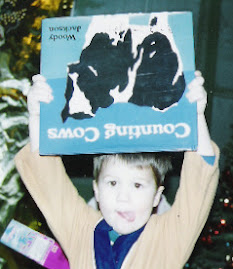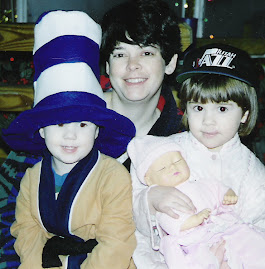Can't help wondering...what you're wondering about?
-1.jpg)
I'm wondering how much progress we can reasonably expect to see in reduction of child abuse when there is so much ignorance about it by so many who really need to know the truth? I.E. those primary caregivers statistically most likely to inflict abuse on the children in their care.
In spite of so many dedicated and concerned people attempting to share information- facts, informed opinions, and shared experiences through every available medium in sincere efforts to make a positive difference for children- there is still an abundance of shudda, wudda, cudda made-up off-the-cuff and pulled-from-u-no-where stuff about child abuse in such abundant supply that it is not surprising how many myths, misconceptions, misunderstandings, deceptions and outright lies surface about child abuse. Sadly they are the loudest and most voracious...their vitriolic noise often drowns out more reasonable voices in attempts to open discussions about child abuse in open forums.
So... today, for a change, I am pasting a lot of words from another source to make accessing them easier. The CDC definitions offered here seem specific, clear, concise and understandable to anyone. Unlike the federal and state definitions they don't allow a lot of room for playing verbal games.
The following is from : http://www.cdc.gov/ncipc/dvp/CM_Surveillance.pdf For readability I put headings in bold but all else is as in the CDC document which can be downloaded at the URL.
For the purposes of this document the following are irrelevant to determining whether child maltreatment has occurred:
• Caregiver’s intent to harm the child.
• Caregiver’s legal liability for the maltreatment.
• Caregiver’s economic means.
• Caregiver’s religious or cultural norms.
For the purposes of this document and based on the general child maltreatment literature, a child is defined as anyone younger than 18 years of age—regardless of state
For the purposes of this document the following are irrelevant to determining whether child maltreatment has occurred:
• Caregiver’s intent to harm the child.
• Caregiver’s legal liability for the maltreatment.
• Caregiver’s economic means.
• Caregiver’s religious or cultural norms.
For the purposes of this document and based on the general child maltreatment literature, a child is defined as anyone younger than 18 years of age—regardless of state
Physical Abuse
Physical abuse is defined as the intentional use of physical force against a child that results in, or has the potential to result in, physical injury.
Physical abuse includes physical acts ranging from those which do not leave a physical mark on the child to physical acts which cause permanent disability, disfigurement, or death (Barnett, Manly, and Cicchetti 1993). Physical abuse can result from discipline or physical punishment (ACF 2002).
Physical acts can include hitting, kicking, punching, beating, stabbing, biting, pushing, shoving, throwing, pulling, dragging, dropping, shaking, strangling/choking, smothering, burning, scalding, and poisoning.
Physical abuse is defined as the intentional use of physical force against a child that results in, or has the potential to result in, physical injury.
Physical abuse includes physical acts ranging from those which do not leave a physical mark on the child to physical acts which cause permanent disability, disfigurement, or death (Barnett, Manly, and Cicchetti 1993). Physical abuse can result from discipline or physical punishment (ACF 2002).
Physical acts can include hitting, kicking, punching, beating, stabbing, biting, pushing, shoving, throwing, pulling, dragging, dropping, shaking, strangling/choking, smothering, burning, scalding, and poisoning.
Exceptions
Physical injuries to the anal or genital area or surrounding areas (e.g., anal or genital bruising or tearing; internal injuries resulting from penetration by a penis, hand, finger, or other object) that occur during attempted or completed sexual abuse, or other physical injuries that result from attempted or completed sexual abuse (e.g., bruises due to restraint, hitting, pushing) are considered sexual abuse and do not constitute physical abuse.
Sexual Abuse
Any completed or attempted (non-completed) sexual act, sexual contact with, or exploitation (i.e., noncontact sexual interaction) of a child by a caregiver.
Any completed or attempted (non-completed) sexual act, sexual contact with, or exploitation (i.e., noncontact sexual interaction) of a child by a caregiver.
Sexual Act
Sexual acts include contact involving penetration, however slight, between the mouth, penis, vulva, or anus of the child and another individual. Sexual acts also include penetration, however slight, of the anal or genital opening by a hand, finger, or other object (Basile and Saltzman 2002).
Genital on genital contact includes:
• Penis to vulva
• Penis to anus
• Penis to penis
Mouth on genital contact includes:
• Mouth to penis
• Mouth to anus
• Mouth to vulvalaw stating otherwise. Users of this document may choose a lower or higher age threshold based on the legal definition of minor in their jurisdiction.
Sexual acts can be performed by the caregiver on the child or by the child on the caregiver. A caregiver can also force or coerce a child to commit a sexual act on another individual (child or adult).
Abusive Sexual Contact
Abusive sexual contact includes intentional touching, either directly or through the clothing, of the following:
• Genitalia (penis or vulva)
• Anus
• Groin
• Breast
• Inner thigh
• Buttocks
Abusive sexual contact does not involve penetration of any of the above.
Abusive sexual contact can be performed by the caregiver on the child or by the child on the caregiver. Abusive sexual contact can also occur between the child and another individual (adult or child) through force or coercion by a caregiver. Abusive sexual contact does not include touching required for the normal care or attention to the child’s daily needs.
Noncontact Sexual Abuse
Noncontact sexual abuse does not include physical contact of a sexual nature between the caregiver and the child.
Noncontact sexual abuse can include the following:
1. Acts which expose a child to sexual activity (e.g., pornography; voyeurism of the child by an
adult; intentional exposure of a child to exhibitionism);
2. Filming10 of a child in a sexual manner (e.g., depiction, either photographic or cinematic, of a child in a sexual act);
3. Sexual harassment of a child (e.g., quid pro quo; creating a hostile environment because of comments or attention of a sexual nature by a caregiver to a child);
4. Prostitution of a child (e.g., employing, using, persuading, inducing, enticing, encouraging, allowing, or permitting a child to engage in or assist any other person to engage in,
prostitution11, or sexual trafficking. Sexual trafficking is defined as the act of transporting children across international borders through deception for forced sexual activity such as
prostitution or sexual slavery (Miller and Jayasundara 2001).
Psychological Abuse
Intentional caregiver behavior (i.e., act of commission) that conveys to a child that he/she is worthless, flawed, unloved, unwanted, endangered, or valued only in meeting another’s needs12. Psychological abuse can be continual (e.g., chronic and pervasive) or episodic (e.g., triggered by a specific context or situation: caregiver substance use/abuse) (Kairys and Johnson 2002).
Psychologically abusive behaviors may include blaming, belittling, degrading, intimidating, terrorizing, isolating, restraining, confining, corrupting, exploiting, spurning, or otherwise behaving in a manner that is harmful, potentially harmful, or insensitive to the child’s developmental needs, or can potentially damage the child psychologically or emotionally (Barnett, Manly, and Cicchetti 1991; McGee and
Wolfe 1991a, b).
Terrorizing
Terrorizing includes caregiver behavior that is life-threatening; makes a child feel unsafe (e.g., situations that are likely to physically hurt, kill, or abandon the child) (Myers et al. 2002); sets unrealistic expectations of the child with threat of loss, harm, or danger if expectations are not met; and threatens or perpetrates violence against a child or a child’s loved ones or objects (including toys, pets, or other possessions) (Kairys and Johnson 2002). For example, placing a child in unpredictable or chaotic circumstances would be considered terrorizing as would be placing a child in a situation reasonably considered dangerous by either the child or another adult.
Isolating
Psychological isolation occurs when a caregiver forbids, prevents, or minimizes a child’s contact with others.
Intentional caregiver behavior (i.e., act of commission) that conveys to a child that he/she is worthless, flawed, unloved, unwanted, endangered, or valued only in meeting another’s needs12. Psychological abuse can be continual (e.g., chronic and pervasive) or episodic (e.g., triggered by a specific context or situation: caregiver substance use/abuse) (Kairys and Johnson 2002).
Psychologically abusive behaviors may include blaming, belittling, degrading, intimidating, terrorizing, isolating, restraining, confining, corrupting, exploiting, spurning, or otherwise behaving in a manner that is harmful, potentially harmful, or insensitive to the child’s developmental needs, or can potentially damage the child psychologically or emotionally (Barnett, Manly, and Cicchetti 1991; McGee and
Wolfe 1991a, b).
Terrorizing
Terrorizing includes caregiver behavior that is life-threatening; makes a child feel unsafe (e.g., situations that are likely to physically hurt, kill, or abandon the child) (Myers et al. 2002); sets unrealistic expectations of the child with threat of loss, harm, or danger if expectations are not met; and threatens or perpetrates violence against a child or a child’s loved ones or objects (including toys, pets, or other possessions) (Kairys and Johnson 2002). For example, placing a child in unpredictable or chaotic circumstances would be considered terrorizing as would be placing a child in a situation reasonably considered dangerous by either the child or another adult.
Isolating
Psychological isolation occurs when a caregiver forbids, prevents, or minimizes a child’s contact with others.
DEFINITIONS OF ACTS OF OMISSION
(CHILD NEGLECT)
Failure to Provide (Barnett, Manly, and Cicchetti 1993)
Failure by a caregiver to meet a child’s basic physical, emotional, medical/dental, or educational needs—or combination thereof. Failure to provide includes the following:
(CHILD NEGLECT)
Failure to Provide (Barnett, Manly, and Cicchetti 1993)
Failure by a caregiver to meet a child’s basic physical, emotional, medical/dental, or educational needs—or combination thereof. Failure to provide includes the following:
Physical Neglect
Caregiver fails to provide adequate nutrition, hygiene, or shelter; or, caregiver fails to provide clothing that is adequately clean, appropriate size, or adequate for the weather. Several examples follow (Barnett, Manly, and Cicchetti 1993):
• Nutrition: A 9-year-old child makes dinner several times per week because the caregiver(s) are sleeping, away, or otherwise unavailable; a child misses or is denied meals on numerous occasions over time; a child is diagnosed as being severely malnourished.
• Hygiene: Child is dirty, smells bad, or has unwashed hair. Child’s living situation is unsanitary; dirty dishes and spoiled food are left on the kitchen table and counter.
• Shelter: Living arrangements for the child and family are unstable for two weeks or more; the residence is infested with roaches or vermin; residence in unheated or inadequately heated because caregivers have failed to ensure heat available.
• Clothing: The child always wears clothing that is too small; the child is not given a warm coat and gloves when the weather is cold.
Emotional Neglect
Caregiver ignores the child, or denies emotional responsiveness or adequate access to mental health care (e.g., caregiver does not respond to infant cries or older child’s attempt to interact) (Barnett, Manly, and Cicchetti 1993).
Caregiver ignores the child, or denies emotional responsiveness or adequate access to mental health care (e.g., caregiver does not respond to infant cries or older child’s attempt to interact) (Barnett, Manly, and Cicchetti 1993).
Medical/Dental Neglect
Caregiver fails to provide adequate access to medical, vision, or dental care for the child. Examples include the following:
• Caregiver does not administer prescribed medications;
• Caregiver refuses to take the child for needed medical attention or seek timely medical attention (Barnett, Manly, and Cicchetti 1993).
Educational Neglect
Caregiver fails to provide access to adequate education. Examples include:
• Caregiver allows child to miss 25 or more school days in one academic year without excuse;
• Caregiver does not enroll the child in school; caregiver encourages a child (under 16 years of age) to drop out of school (Barnett, Manly, and Cicchetti 1993). 18
Failure to Supervise
Failure by the caregiver to ensure a child’s safety within and outside the home given the child’s emotional and developmental needs (Barnett, Manly, and Cicchetti 1993).
Inadequate Supervision
Failure by the caregiver to ensure that the child engages in safe activities and uses appropriate safety devices; to ensure that the child is not exposed to unnecessary hazards; or to ensure appropriate supervision by an adequate substitute caregiver (Barnett, Manly, and Cicchetti 1993).
Inadequate supervision (sometimescalled “supervisional neglect ”) includes occasions when a caregiver knowingly fails to protect a child from maltreatment perpetrated by a substitute caregiver. Under such conditions, the primary caregiver’s behavior would be considered neglectful only if the maltreatment was recognized and allowed to occur. Regardless of the primary caregiver’s knowledge of the maltreatment, the substitute caregiver’s behavior would be considered maltreatment.
Exposure to Violent Environments
Caregiver intentionally13 fails to take available measures to protect the child from pervasive violence within the home, neighborhood, or community (Kairys and Johnson 2002). For example, a caregiver who sells illicit drugs out of the child’s home exposes the child to a violent environment; or, a school bus driver (temporary caregiver) who allows a student to be routinely victimized by another student while riding the bus without taking steps to intervene (e.g., notifying school administrators) also exposes a child to a violent environment.
Exposure of a child to violence between caregivers in the home may also qualify as exposure to a violent environment, particularly if the caregivers do not take available measures to protect the child from exposure. But, in instances where the caregiver is being victimized by a partner, and alternatives to protect the child are not available, or the caregiver is unaware of alternatives, the caregiver is not maltreating the child.
13
CO-OCCURRENCE OF MULTIPLE
TYPES OF ABUSE AND NEGLECT14
Multiple forms of maltreatment often coexist, as described in these examples:
• Police find a 20-month-old child with bruises on extremities, cigarette burns to the forehead and upper chest, and signs of dehydration. The child was at home with the male caregiver who was high on opium. In this instance, physical abuse, failure to provide (adequate nutrition), failure to protect
(caregiver is under the influence of drugs and unable to care for the child), and psychological abuse have occurred.
• Paramedics find a two-and-a-half-year-old child. The undressed child was walking outside in the winter and had belt-patterned bruises on the legs and trunk. The child also had ethyl alcohol in his blood system. In this example, physical abuse, failure to provide (adequate clothing), and failure to protect (unaccompanied child) have occurred.
• Upon reading a school report card, the caregiver/parent slaps the child’s face, withholds food, and berates the child’s ability until “better marks” are produced. In this scenario, physical abuse, failure to provide, and psychological abuse have occurred.
A Child is Waiting,
Take care...be aware,
Nancy Lee

















3 comments:
This list is a bit overwhelming when I think of all of these types of abuse and neglect I experienced as a child. But, I'm glad you've posted this here. We have to just really spell it out for some folks, don't we?
hi
blog walking
nice to be here
Thanks for stopping by Shimiand Marj...
And yes Marj... we surely do have to spell it out for some people. There is just so much denial of what constitutes abuse. Can't hope for change untii people acknowledge the abuse in their lives... as victims and as perpetrators.
Post a Comment